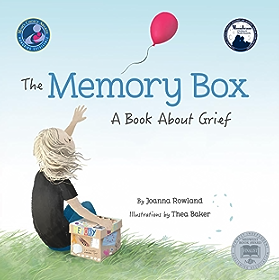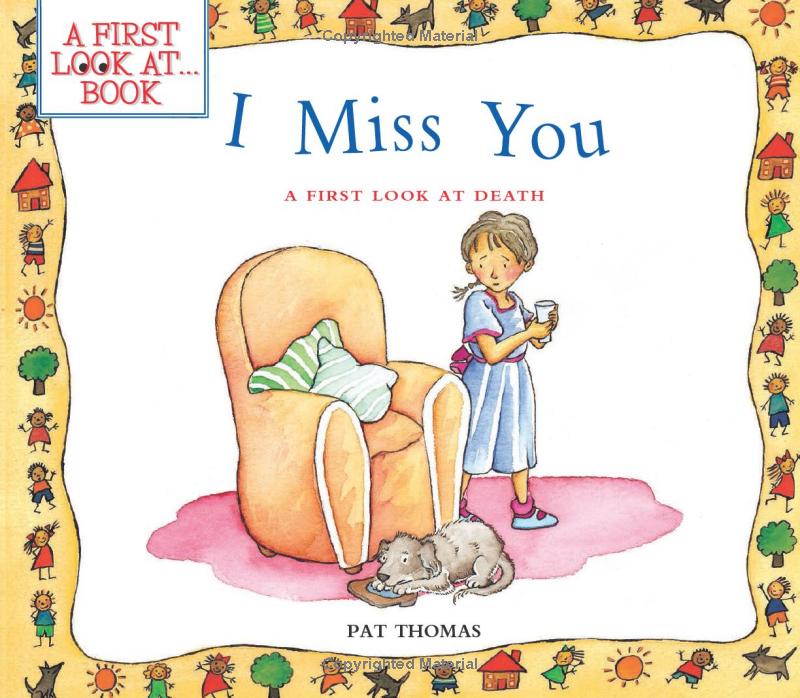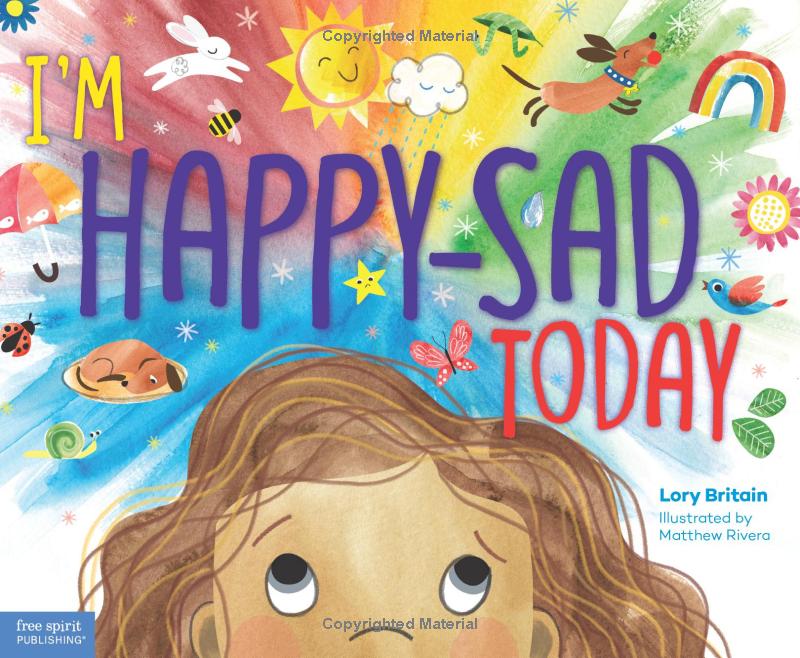When a child is grieving, knowing how to talk through the feelings and emotions accompanying loss can be difficult. Many feelings arise during a healthy grieving process and it can feel overwhelming as a parent to know where and when to start a conversation about what you are experiencing emotionally.
There is no perfect way to help your child through grief, but there are some great places to start!
One great way to open this tricky conversation with kiddos is with the use of age-appropriate, topical books.
Below are some of my favorite books to support conversations about grief, and to begin the process of exploring feelings around grief and loss.
Lifetimes: The Beautiful Way to Explain Death to Children
by Bryan Mellonie & Robert Ingpen
Amazon Description: “Lifetimes is a moving book for children of all ages, even parents too. It lets us explain life and death in a sensitive, caring, beautiful way. Lifetimes tells us about beginnings. And about endings. And about living in between. With large, wonderful illustrations, it tells about plants. About animals. About people. It tells that dying is as much a part of living as being born. It helps us to remember. It helps us to understand.”
What Does Dead Mean?: A Book for Young Children to Help Explain Death and Dying
by Caroline Jay & Jenni Thomas; Illustrated by Unity-Joy Dale
Amazon Description: “Questions such as ‘Is being dead like sleeping?’, ‘Why do people have to die?’ and ‘Where do dead people go?’ are answered simply, truthfully and clearly to help adults explain to children what happens when someone dies. Prompts encourage children to explore the concepts by talking about, drawing or painting what they think or feel about the questions and answers.”
Something Very Sad Happened: A Toddler’s Guide to Understanding Death
by Bonnie Zucker; Illustrated by Kim Fleming
Amazon Description: “When a loved one dies, it can be hard to know how to explain it to a young child, particularly if you are grieving the loss yourself. Written at a developmental level that is appropriate for two- and three-year-olds, the story explains death; lets children know that it is okay to feel sad; and reassures children that they can still love the person who died, and the person who died will always love them.
Since the two- to three-year-old child cannot read, this story is intended to be personalized; certain words are color-coded in red to cue to you to substitute with the appropriate names and pronouns for the person who died.”
Amazon Description: “Written and illustrated by a therapist (and mother), Andrea Dorn, MSW, When Someone Dies walks children through the bereavement process in a simple, concrete, and developmentally appropriate way. Through the lens of mindfulness, children will learn how to say goodbye, make space for any emotions that arise, and work through their grief.”
The Memory Box: A Book About Grief
by Joanna Rowland; Illustrated by Thea Baker
Amazon Description: “Recommended and adopted by parenting blogs, bereavement support groups, hospice centers, social service agencies, military library services, church groups, and educators, The Memory Box offers a very simple approach to overcoming loss, separation, and disappointment while also giving support and encouragement that children easily understand.”
The Invisible String
by Patrice Karst; Illustrated by Joanne Lew-Vriethoff
Amazon Description: “Recommended and adopted by parenting blogs, bereavement support groups, hospice centers, foster care and social service agencies, military library services, church groups, and educators, The Invisible String offers a very simple approach to overcoming loneliness, separation, or loss with an imaginative twist that children easily understand and embrace, and delivers a particularly compelling message in today’s uncertain times.”
The Invisible Web
by Patrice Karst; Illustrated by Joanne Lew-Vriethoff
Amazon Description: “This uplifting inspirational title for all ages puts the concept of “six degrees of separation” into a new context that urges listeners to recognize, respect, and celebrate their infinite, unbreakable bonds with the entire human family.”
I Miss You: A First Look at Death
by Pat Thomas; Illustrated by Lesley Harker
Amazon Description: “When a close friend or family member dies, it can be sad for kids and difficult for them to express the big feelings they are experiencing. This book will help explain in a gentle way that death is a natural complement to life and that grief and a sense of loss are normal feelings to have following the death of a loved one.”
The Goodbye Book
by Todd Parr
Amazon Description: “Through the lens of a pet fish who has lost his companion, Todd Parr tells a moving and wholly accessible story about saying goodbye. Touching upon the host of emotions children experience, Todd reminds readers that it’s okay not to know all the answers, and that someone will always be there to support them. An invaluable resource for life’s toughest moments.”
When Dinosaurs Die: A Guide to Understanding Death
by Laurie Krasny Brown; Illustrated by Marc Brown
Amazon Description: “Straightforward and comprehensive, this indispensable book is a comforting aid to help young kids and families through a difficult time in their lives. No one can really understand death, but to children, the passing away of a loved one can be especially perplexing and troublesome. This is true whether the loss is a family member, friend, or pet.
Here to offer advice and reassurance are the wise dinosaurs from the bestselling Dino Tale series. This succinct and thorough guide helps dispel the mystery and negative connotations associated with death, providing answers to kids’ most-often asked questions.”
When A Pet Dies
by Fred Rogers
Amazon Description: “In this useful book from the First Experience series, the affable star of Mister Rogers’ Neighborhood helps children share feelings of the loss of a pet while offering reassurance that grieving is a natural, healing thing to do.”
Here are some helpful additional resources for assisting children with big feelings:
Worry Wishing Trail: An Experiential Guide For Children Struggling With Worry
by Susan Stutzman; Illustrated by Angie Golden
Amazon Description: “Many children ages 2-12 struggle to overcome worry. It can debilitate a child and rob them of experiencing a joy-filled childhood. This experiential book was written to help children overcome their worry so they can experience the fullness of being a child free from the burdens of worry.”
Listening to My Body
by Gabi Garcia; Illustrated by Ying Hui Tan
Amazon Description: “Listening to My Body is an engaging and interactive book that guides children through the process of naming their emotions and the physical sensations accompanying them. Teaching kids to tune into their bodies and name their feelings is a foundation for emotional regulation.”
I’m Happy-Sad Today: Making Sense of Mixed-Together Feelings
by Lory Britain Ph.D.; Illustrated by Matthew Rivera
Amazon Description: “With gentle messaging and charming illustrations, a little girl talks about her many layered feelings, ultimately concluding, ‘When I have more than one feeling inside me, I don’t have to choose just one. I know that all my feelings are okay at the same time.’ A special section for adults presents ideas for helping children explore their emotions, build a vocabulary of feeling words, know what to do if they feel overwhelmed, and more.”
The Rabbit Listened
by Cori Doerrfeld
Amazon Description: “With its spare, poignant text and irresistibly sweet illustration, The Rabbit Listened is about how to comfort and heal the people in your life, by taking the time to carefully, lovingly, gently listen.”
When Sadness Is At Your Door
by Eva Eland
Amazon Description: “In When Sadness Is at Your Door, Eva Eland brilliantly approaches this feeling as if it is a visitor. She gives it a shape and a face, and encourages the reader to give it a name, all of which helps to demystify it and distinguish it from ourselves. She suggests activities to do with it, like sitting quietly, drawing, and going outside for a walk. The beauty of this approach is in the respect the book has for the feeling, and the absence of a narrative that encourages the reader to “get over” it or indicates that it’s “bad,” both of which are anxiety-producing notions.”
Where Happiness Begins
by Eva Eland
Amazon Description: “This helpful picture book is a great introduction to mindfulness and emotional literacy. A spare text and simple illustrations encourage readers to find happiness even if it feels far away. The book gives it a shape, turning this elusive emotion into something real while acknowledging that you can’t be happy all the time. The thoughtful text reassures readers that when happiness is hard to find, they can look for it in many places.”

Susan Stutzman
Owner | Child Therapist | LCPC, RPT
Parenting is hard! But you don’t have to do it alone. I work with children and parents to resolve emotional conflict, cultivate healing, and nurture hope.
New Clients Call: (855) 586-1802
Current Clients: (855) 543-7687
Ask Us Anything!
We help anxious kids and frustrated parents. We serve Hinsdale & the Western Suburbs of Chicago.
Made with ♥︎ in Hinsdale, Illinois for Chicago
Built By Brand Your Practice.
Kid Matters Counseling, P.C. DISCLAIMER: This website and blog are for informational, educational and general discussion purposes only. It is understood that no guarantee or warranty arises from the information provided, discussed or commented upon in this website and blog nor does it constitute legal or other professional advice on any subject matter. Access to this website and blog is voluntary and at the sole risk of the user. If you think that you have a medical emergency (including clinical), call your doctor or 911 immediately. A licensed medical professional should be consulted for diagnosis and treatment of any and all medical conditions. While the information contained within this website and blog is periodically updated, no guarantee is given that the information provided is correct, complete, and/or up-to-date. See our complete Privacy Policy and Terms of Service.






















